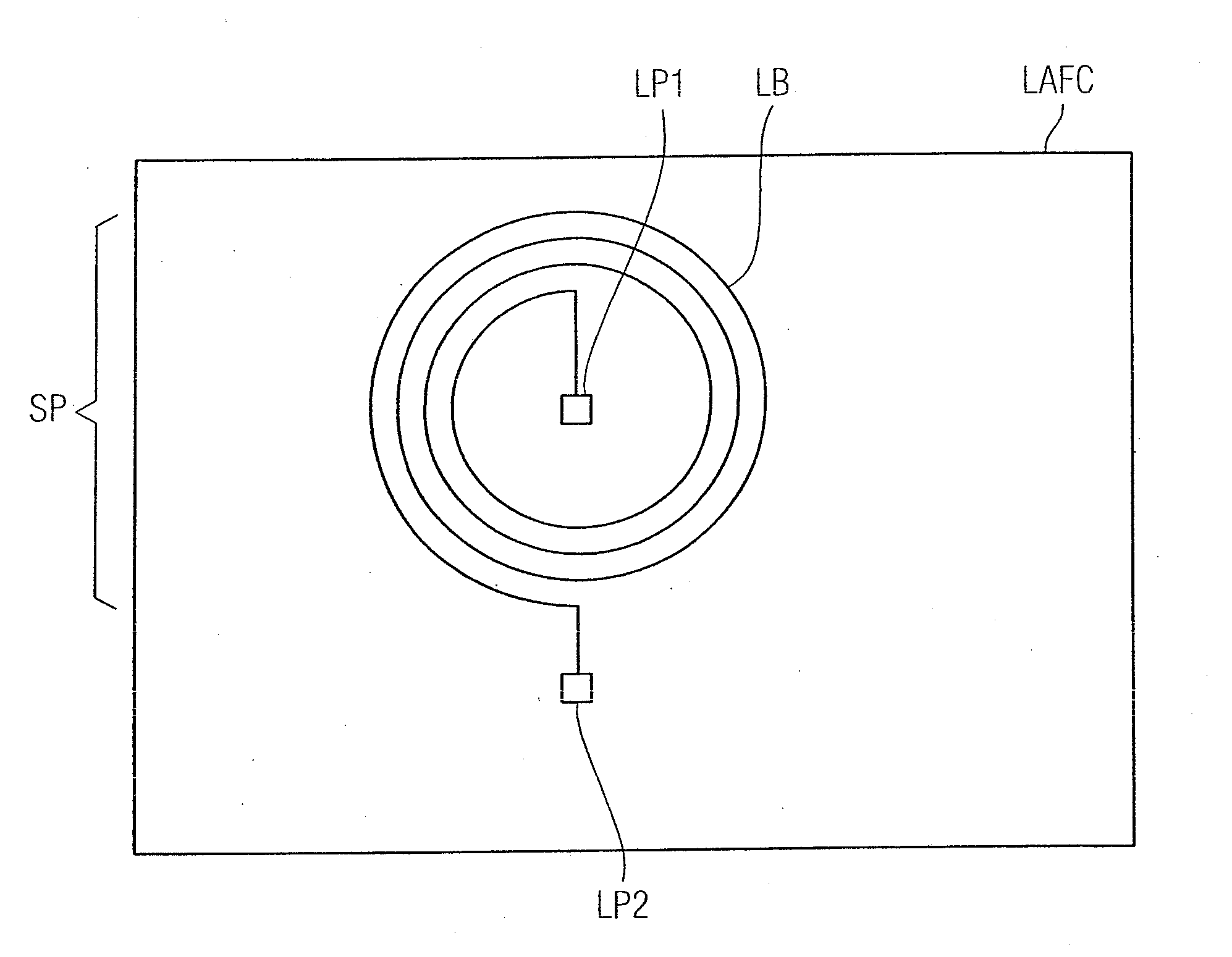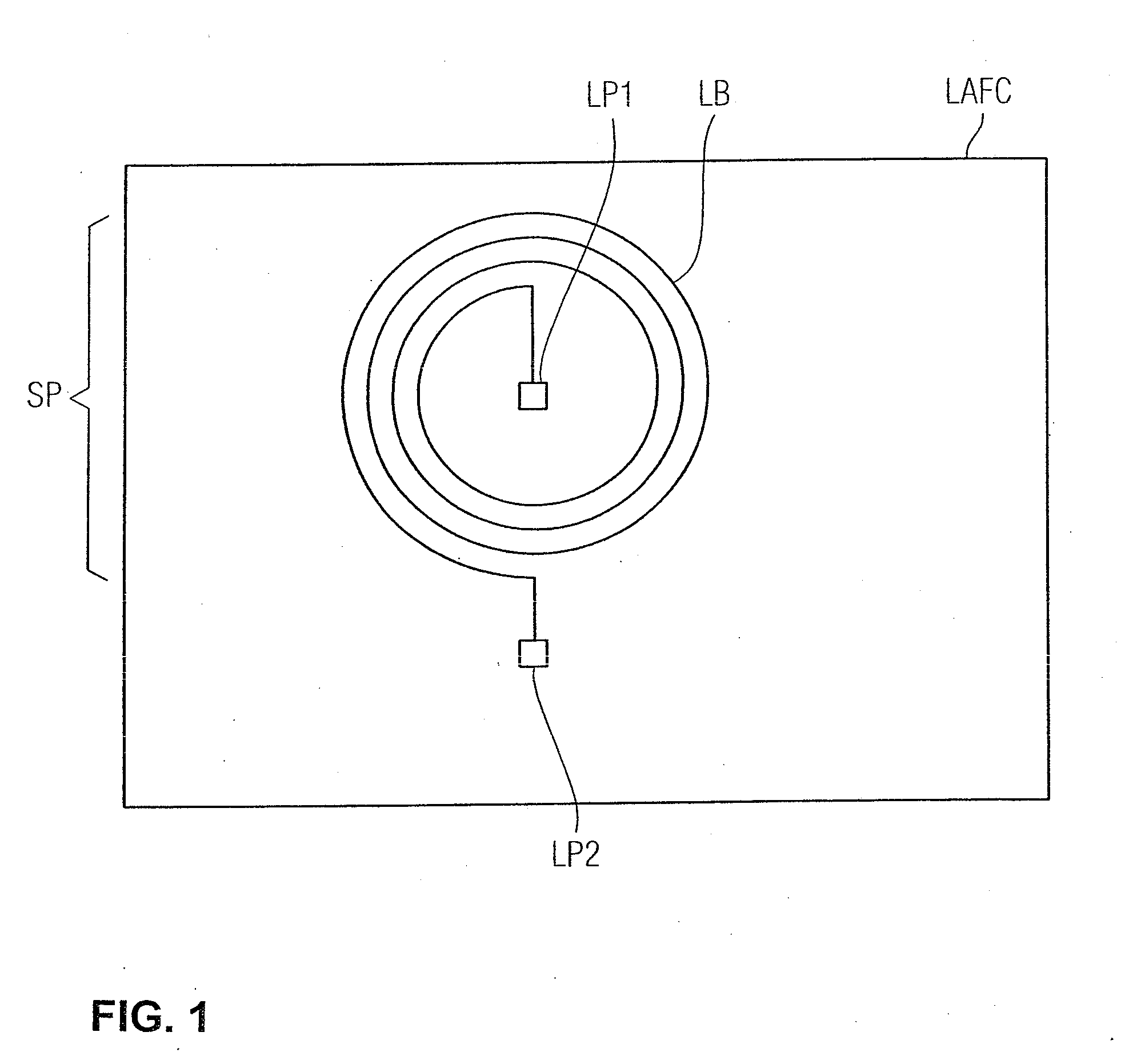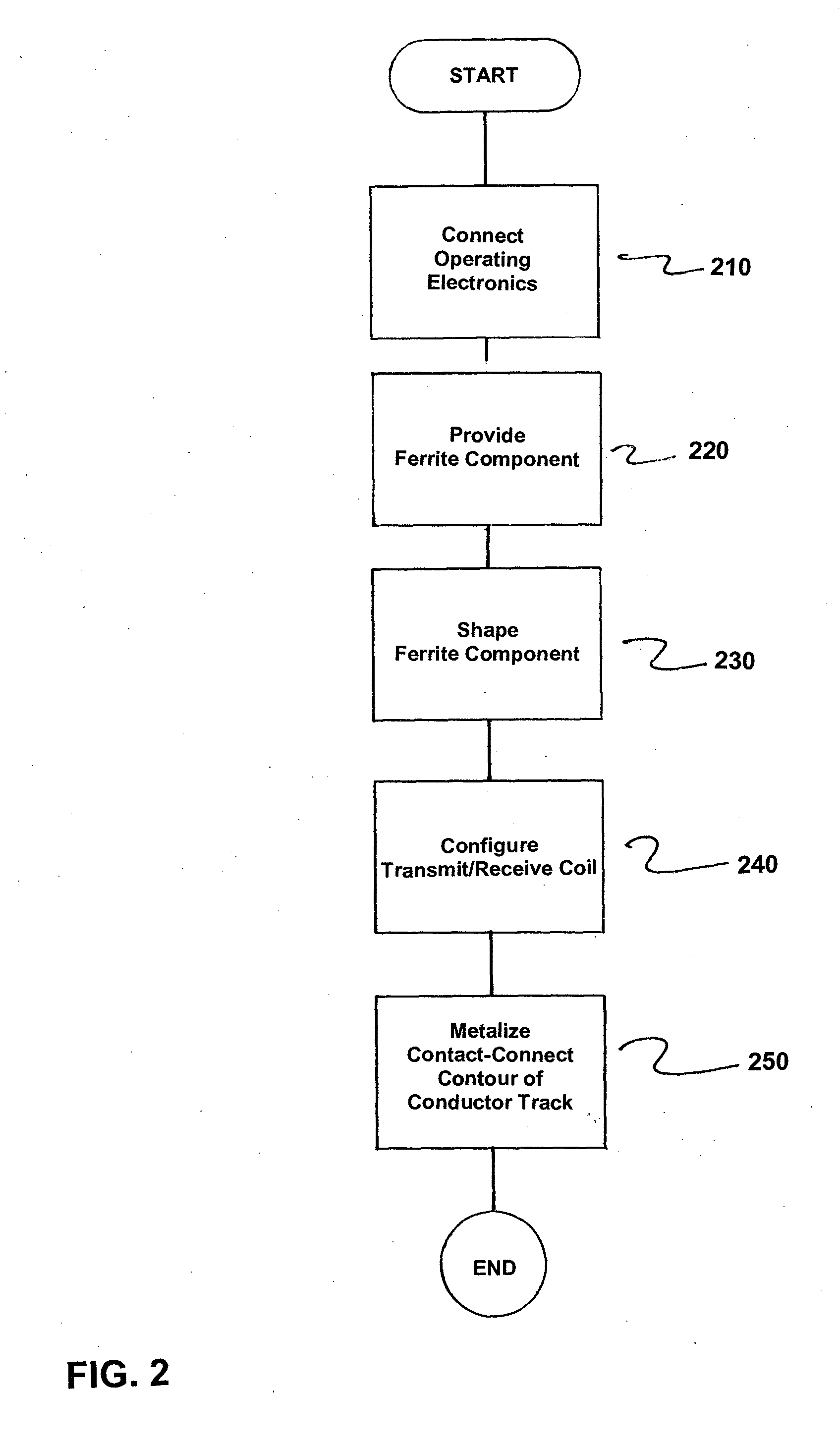Method for Providing Inductively Coupled Radio Frequency Identification (RFID) Transponder, and RFID Transponder
a technology of inductive coupling and radio frequency identification, applied in the field of radio frequency identification (rfid) transponders, can solve the problems of inability to subsequently alter conventional ferrite cores, undesirable attenuation, and no longer available rfid transponders, and achieve the effect of simplifying mechanical construction
- Summary
- Abstract
- Description
- Claims
- Application Information
AI Technical Summary
Benefits of technology
Problems solved by technology
Method used
Image
Examples
Embodiment Construction
[0019]FIG. 1 is schematic illustration of a ferrite component laser-activated ferrite compound (LAFC) which consists of a liquid crystal polymer (LCP) and which is furnished in a laser-activateable manner. That is, a laser beam can be used to trace lines and areas on the surface of the ferrite component LAFC, thus resulting in a change in the surface constitution in regions processed by the laser light. In addition, it should be noted that a modified polymer is present in these processed regions. This method is known as laser direct patterning (LDP). The present inventors have determined that the modified liquid crystal polymer, which is therefore furnished with an additive for the laser activateability, can be enriched with ferrite particles, without the insulating properties (electrical insulation) and the laser activateability being impaired. The ferrite component LAFC shown here includes a laser-activateable plastic enriched with ferrite particles in this way, where, with the us...
PUM
| Property | Measurement | Unit |
|---|---|---|
| magnetic flux | aaaaa | aaaaa |
| magnetic field | aaaaa | aaaaa |
| AC voltage | aaaaa | aaaaa |
Abstract
Description
Claims
Application Information
 Login to View More
Login to View More - R&D
- Intellectual Property
- Life Sciences
- Materials
- Tech Scout
- Unparalleled Data Quality
- Higher Quality Content
- 60% Fewer Hallucinations
Browse by: Latest US Patents, China's latest patents, Technical Efficacy Thesaurus, Application Domain, Technology Topic, Popular Technical Reports.
© 2025 PatSnap. All rights reserved.Legal|Privacy policy|Modern Slavery Act Transparency Statement|Sitemap|About US| Contact US: help@patsnap.com



